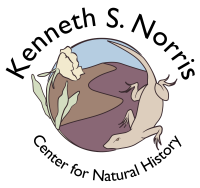This exhibit highlights California pollinators — our native bees, flies, birds, beetles, and butterflies — that play key roles in the ecology of our environments. Vivid images, specimens, and educational text introduce visitors to what pollination is, who these pollinators are, their habitats, and ways in which to support them.
“Pollinators: Keeping Company with Flowers” is a traveling exhibition from Exhibit Envoy developed by Jennifer Jewell and John Whittlesey.
Exhibit Events
Pollinators and Urban Community Gardens with Stacy Philpott
During this online talk, Stacy Philpott will share her research from the past decade exploring how urban garden and landscape management influence pollinators. Watch.
Pollinator Conservation with the Xerces Society | Thursday, March 3 | 6:00-7:00 p.m.
For this talk, Maddy Kangas, Monarch Butterfly Conservation Planner with the Xerces Society, will share the status of pollinators and what everyone can do to contribute to conservation. Learn more and register.
Pollinators: Keeping Company with Flowers
Today, more than 350,000 known flowering plants exist and more than 80% of them are estimated to be animal-pollinated. By working together, plants and pollinators get what they need: animals get fed and flowers get pollinated, allowing for plants’ seed formation and the next generation of plants.
Flower forms come in a dizzying array of shapes, sizes, colors, scents and bloom-times, all of which help them take advantage of either the most pollinators possible or just the right pollinator for that flower.
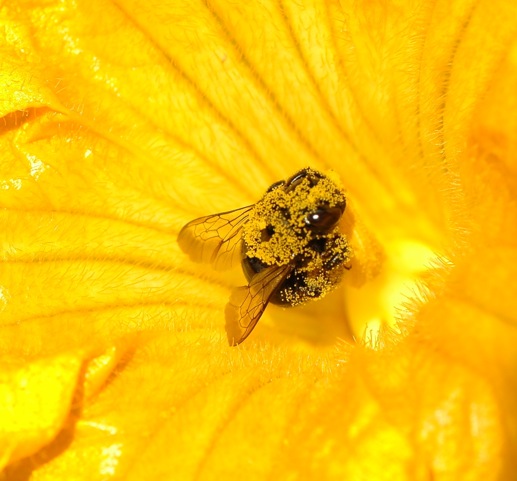
Bees and Wasps
Bees and wasps gather nectar and/or pollen from flowering plants to feed themselves. Females of most bee and some wasp species also gather pollen and nectar to feed their young. While bees are considered the most effective pollinating insects, both bees and wasps are important pollinators.
Bees have special body hairs to which pollen can stick. On many female bees dense
hair “brushes” line their back legs and the underside of their abdomen. Wasps look like bees, but have very narrow waists between their thorax and abdomen. They generally have smoother bodies with less hair. As a result, they are not as efficient at pollinating because pollen is less likely to stick to their bodies.
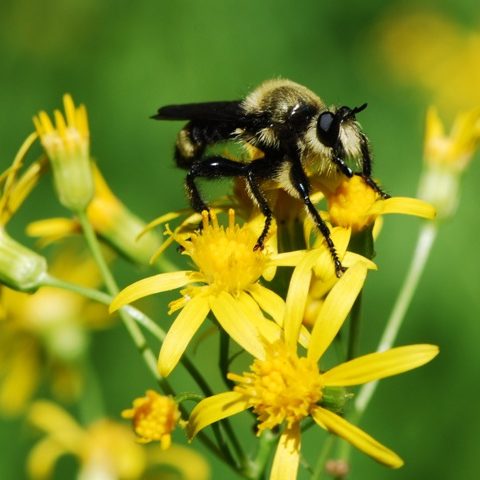
Flies
Flies are characterized by having one set of wings – one wing on each side of their
body. More than 16,000 species of flies live in North America. Flies begin life as an egg, hatch into a larval stage, often called a maggot, transform into their pupal stage from which they eventually emerge as a fully formed flying insect.
As adults many flies rely in part, or completely, on flower pollen and/or nectar for food. Besides visiting flowers for food, many species of flies also lay their eggs on flowers or the foliage of flowering plants, which will be the larval food source. While many flies are considered pests, as a result of their food and habitat needs, flies are also important pollinators of many flowering plants in many different environments.
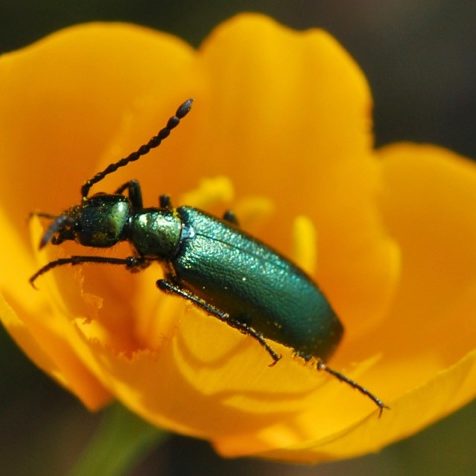
Beetles
While many beetles are considered pests, according to the US Forest Service, beetles comprise the largest set of pollinating animals, due to sheer numbers. It is estimated that more than 800,000 species of beetles worldwide are
responsible for pollinating 88% of the 240,000 flowering plants globally.
Beetles were some of the earliest pollinating creatures and fossil records reveal many beetles during the Mesozoic period, 200 million years ago. Because beetles chew, they eat flower petals as well as pollen. Many flowers pollinated by beetles are flattened or dish shaped, with pollen readily reached. It is believed that beetles can see color and also have a strong sense of smell. Many flowers pollinated by beetles, such as the Washington Lily native to California, are sweetly scented.
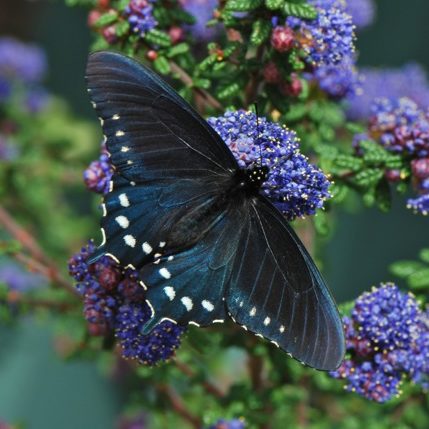
Butterflies and Moths
Most butterflies and moths subsist on a liquid diet, using their long straw-like tongue, called a proboscis, to gather nectar from flowers, dew from foliage, as well as minerals and other nutrients from mud puddles (a behavior known as puddling). Some can even pierce and drink the fluid from an aphid.
Butterflies and moths are unique in having taste receptors on the pads of their feet.
They use these to locate nectar as well as to locate the correct plant on which to lay
their eggs so that when their larva hatch they will have appropriate foliage to eat. Because moths are generally active at night, the flowers they nectar at and pollinate
tend to be white or cream colored, often night blooming and night scented. Butterflies see a limited number of colors as well as ultraviolet colors. The flowers they tend to nectar at and pollinate are brightly colored, fragrant and open in the daytime.
People Helping Pollinators
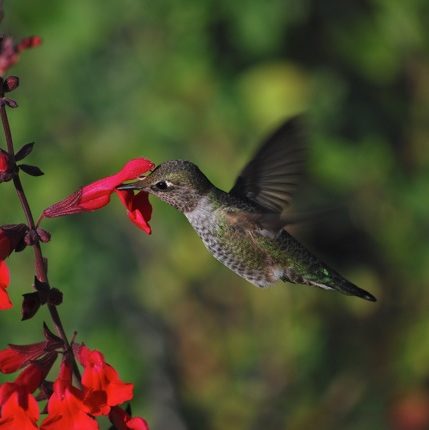
Gardening
Gardens are refuges – for humans, for plants and for pollinating insects whose natural habitats have been diminished and fractured by human development. To attract the lively beauty of a diversity of pollinators, your garden should provide:
- Year-round pollen and nectar food sources with a variety of flower colors, shapes, bloom-times planted in as large masses as your space can provide.
- DO NOT USE PESTICIDES.
- Year-round clean, fresh water – positioned near shrubs or trees for quick retreat from predators.
- Year-round nesting sites: including bare soil, dead wood and twigs, seed heads, fluff and duff.
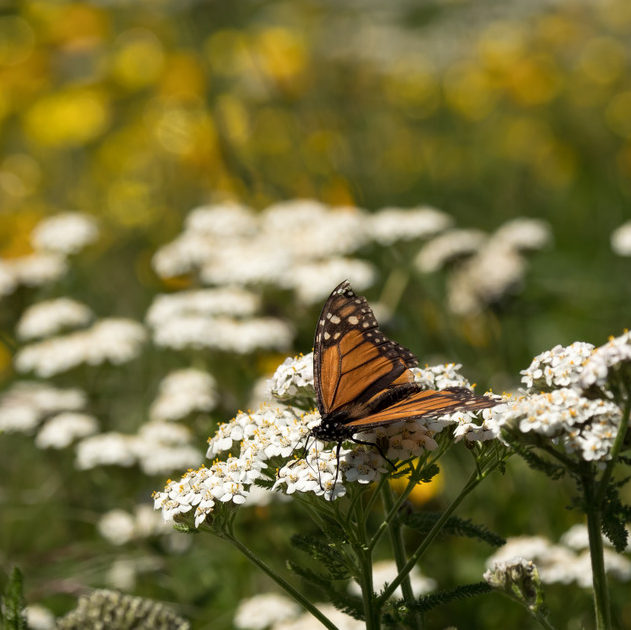
Monarchs
In 2020, the number of monarchs (Danaus plexippus) overwintering in California dropped to less than 0.01% of the historic levels. For every 2,250 monarchs there were 30 years ago, there is only one left flying today. You can help increase monarch populations by supporting the Xerces Society for Invertebrate Conservation’s Western Monarch Action Plan priorities based on where you live.
For those living within 5 miles of the Central California Coast:
- Protect and restore overwintering habitat, such as the monarch grove at Natural Bridges State Beach
- Plant pesticide-free native nectar plants
- Do NOT plant milkweed (Asclepias spp.), none of which are native to the Central Coast
For those living in Central and Southern California, west of the Sierra Nevada range and more than 5 miles from the coast:
- Protect and plant pesticide-free early season native milkweed, such as narrow leaf milkweed (Asclepias fascicularis), and nectar plants



